Hill Dickinson Stadium
| Capacity | 52 769 |
|---|---|
| Country | England |
| City | Liverpool |
| Clubs | Everton FC |
| Other names | Bramley-Moore Dock Stadium, Everton Stadium |
| Inauguration | 17/02/2025 |
| Construction | 2021–2025 |
| Cost | £800 M ($1.08 B) |
| Design | MEIS architects, BDP Pattern |
| Contractor | Laing O'Rourke |
Advertisement
Hill Dickinson Stadium – stadium description
What does the Hill Dickinson Stadium look like in a nutshell?
Everton had been pursuing various new stadium schemes since the late 20th century, yet construction did not start until the summer of 2021. The venue was completed in time for the 2025/26 season – that was when Everton moved out of Goodison Park, their home for 133 years.
The stadium was built on the banks of the River Mersey, two miles north of Liverpool city centre, on the site of Bramley-Moore Dock, which first had to be filled in.
The new venue and its surroundings were designed with care for historic structures, the site’s context, and references to local architecture; nonetheless, the decision to build it was one of the main reasons Liverpool was removed from the UNESCO World Heritage list.
The stadium’s architecture is based on contrast: a massive brick plinth, referencing the port’s industrial buildings, is topped with a light, metallic upper tier with flowing lines that bring a modern, dynamic touch.
The stands hold 52,769 spectators, placing the venue among the ten largest stadiums in England. Even before its opening, it was selected as one of the host venues for Euro 2028 in the United Kingdom and Ireland.
How did Hill Dickinson Stadium come to be?
Before moving to their new home at Bramley-Moore Dock, Everton FC had played for many decades at Goodison Park. The origins of that ground go back to a dispute between the club and the owner of the pitch at Anfield Road, where Everton used to play.
As tensions grew, Everton secured a plot of land about half a mile to the north (on the other side of Stanley Park) and in 1892 built the new Goodison Park. Anfield’s owner, John Houlding, was left with an empty stadium, so he founded a new club – Liverpool FC.
Such were the beginnings of one of the most famous rivalries in English football, known as the Merseyside derby. Over time, it was Liverpool FC, founded later, that gained a dominant position and worldwide renown; but it is also worth stressing that Everton remains one of the most historic and decorated clubs in England.
Goodison Park was expanded several times over the years, with works involving the renowned Scottish architect Archibald Leitch. The last major redevelopment came in 1994, when an entirely new stand was built behind the southern goal (the Park End).
The stadium’s capacity at that time stood at around 40,000, though in earlier years – before seats were installed – it was much higher.
What were the previous plans for a new Everton FC stadium?
Everton FC had been actively exploring possibilities for a new stadium since the late 20th century. Over the years, many different ideas and concepts emerged – among them, of course, were voices advocating staying at Goodison Park, and even (rather unlikely) proposals for a shared stadium with Liverpool FC.
It is also worth noting that in the early 21st century, Liverpool FC seriously considered building a new stadium as well, although the club ultimately decided to expand Anfield, significantly enlarging two stands: the Main Stand (2014–2017) and the stand behind the north goal (2021–2024).
The most important projects that shaped the discussion about the Toffees' future stadium over the years and were likely to be realised, included plans for stadiums in Kirkby, King’s Dock, and Walton Hall Park.
New Goodison Park
The idea of building a new stadium at a different location was already suggested in October 1996 by the club’s then-owner, Peter Johnson. In May 1997, preliminary plans were presented for a 60,000-seat stadium near a golf course on the outskirts of Kirkby. The so-called New Goodison Park plans became obsolete when Peter Johnson resigned from leading the club at the end of 1998.
King’s Dock
In 2000, new plans for a stadium were proposed. The venue was to be located near the Liverpool city centre, on the Mersey waterfront, on the site of King’s Dock. The project was very ambitious: the stadium would have had a capacity of 55,000 spectators, a retractable roof, and a movable pitch.
Five parties competed for the right to use this site, but Everton’s proposal was considered the best by the authorities. However, the vision could not be realized due to insufficient funding, and instead of a stadium, the Liverpool Arena concert hall was built on the King’s Dock site.
The King’s Dock Stadium project can be viewed on a separate page
The Kirkby Project
In 2006, plans for a new stadium in Kirkby – located on the north-eastern outskirts of Liverpool – resurfaced; this time the stadium was to be built almost in the town centre.
The design of the new stadium was based on 1. FC Köln’s stadium, and the project was planned in collaboration with Tesco, including the construction of a shopping centre. Ultimately, in November 2009, the UK government opposed the plans, and the stadium was never built.
The Kirkby Stadium project can be viewed on a separate page
Walton Hall Park
Another plan emerged in 2014, proposing a stadium in Walton Hall Park, about one mile north-east of Goodison Park. The idea of building a large stadium in this location faced strong opposition from local residents and opposing politicians, and it was abandoned in May 2016.
The Walton Hall Park stadium projects, developed by IDOM and Wilson Owens Owens, are presented on separate pages
When was the design for the new stadium at Bramley-Moore Dock created?
At the beginning of 2016, billionaire Farhad Moshiri became the majority shareholder of Everton and promised to address the issue of a new stadium. Although the idea of building in Walton Hall Park was abandoned, later in 2016 American architect Dan Meis was engaged, and two new sites were considered: Stonebridge Cross and Bramley-Moore Dock.
In January 2017, the club announced that Bramley-Moore Dock was the preferred location for the new stadium. An agreement was soon reached with the dock’s owner, Peel Holdings, and in November 2017 a deal was signed granting the club a 200-year lease on the land.
In April 2017, the club established a subsidiary called Everton Stadium Development Limited to manage the construction process of the new stadium.
At the end of 2018, public consultations began, revealing that the new stadium would have a capacity of around 52,000 spectators, with the possibility of a further 10,000-seat expansion. On 25 July 2019, the first visualizations of the new stadium prepared by Dan Meis’ studio (MEIS architects) were published.
The Hill Dickinson Stadium project can be viewed on a separate subpage
When was Hill Dickinson Stadium built?
When did construction of Hill Dickinson Stadium begin?
In February 2020, Laing O’Rourke was chosen as the main contractor for the new stadium. A year later, the City Council approved the planning project. Construction began at the end of July 2021, with the official groundbreaking ceremony held in early August.
Did the construction of Hill Dickinson Stadium lead to Liverpool being removed from the UNESCO list?
Liverpool’s historic center and port districts are a testament to the development of one of the world’s largest trading hubs in the 18th and 19th centuries. Six areas of the city were inscribed as a UNESCO World Heritage Site under the name “Liverpool – Maritime Mercantile City”.
Bramley-Moore Dock, the site of the new stadium, was located within one of these six protected areas.
Proposed waterfront developments (the Liverpool Waters project) had long raised UNESCO’s concerns, which warned that their implementation could compromise the area’s historic character and result in removal from the World Heritage list.
Although the stadium and its surroundings were designed to reflect local architecture and landscape, including the restoration of historic structures such as the hydraulic tower, the construction ultimately became the final trigger for Liverpool’s removal from the UNESCO list, which was officially confirmed on 21 July 2021.
When was Bramley-Moore Dock filled in?
Construction began with the demolition of non-listed structures and the filling in of Bramley-Moore Dock, which was filled with 480,000 m³ of sand extracted from the Irish Sea. This stage was completed in early 2022. By summer 2022, 2,776 piles had been driven into the ground, allowing the construction of the stands to proceed at full speed.
Before the dock was filled, its bed was surveyed, during which 12 World War II shells were discovered. They were removed and safely disposed of by Army and Navy Bomb Disposal teams. In addition, fish living in the dock were rescued.
Were there any fatalities during the construction of Hill Dickinson Stadium?
There was one fatal accident during the construction of Everton’s stadium. On 14 August 2023, 26-year-old Michael Jones, operating a scissor lift, was crushed between the lift and a beam above, sustaining severe head injuries. He was pronounced dead after being taken to hospital.
Michael Jones was from nearby Kirkby and was an Everton fan. Exactly one year after his death, a monument dedicated to him – a mooring post painted blue – was unveiled on the plaza in front of the new stadium.
What is the name of Everton’s new stadium?
On 16 May 2025, it was announced that the stadium’s naming rights had been acquired by Hill Dickinson, an international law firm headquartered in Liverpool. Under the agreement, the stadium was named Hill Dickinson Stadium. During the planning stage and throughout most of the construction period, the venue had been referred to as Everton Stadium or Bramley-Moore Dock Stadium.
Earlier, in January 2020, it had been announced that the naming rights would go to Russian company USM Holdings. However, following Russia’s invasion of Ukraine in 2022, the partnership was terminated.
When was Hill Dickinson Stadium completed?
Originally, the stadium was scheduled to open at the start of the 2024/25 season. During construction, Everton decided to delay the move by a year to allow more time for builders and to finalize all details related to the relocation.
Prefabricated elements were extensively used in construction – both reinforced concrete components and entire sections of the brick facade were manufactured off-site.
The stadium was handed over to the club by the contractor on 19 December 2024, although finishing works continued in the following months.
A report on the construction of Hill Dickinson Stadium can be found on a separate page
When was Hill Dickinson Stadium inaugurated?
Instead of a formal opening, three test events were held at the stadium before the start of the 2025/26 season, gradually allowing more spectators into the stands:
- The first test event took place on 17 February 2025, when Everton and Wigan Athletic U18 teams played a match that ended with a 2–1 win for the visitors. The game was attended by 10,000 spectators, who were allowed into the south stand
- The second test event, held on 23 March 2025, featured a match between Everton U21 and Bolton Wanderers B, won 1–0 by the hosts. The game was concluded after 65 minutes to practice the evacuation of the 25,000 fans in attendance
- The third and final test event took place on 9 August 2025 with the stands at full capacity. A preseason friendly was held between Everton and AS Roma, ending 0–1
The first competitive match at the new stadium was played on 24 August 2025, when Everton defeated Brighton & Hove Albion 2–0 in the second round of the Premier League.
How much did Hill Dickinson Stadium cost to build?
The construction of Hill Dickinson Stadium cost around £800 million. The project was largely financed through private funds and commercial loans, with relatively modest public support of £15 million allocated for the renovation of historic structures within the dock area.
Who designed Hill Dickinson Stadium?
The architect behind the original concept for Everton’s new stadium was American Dan Meis and his firm MEIS architects. BDP Pattern played a leading role in developing the technical documentation.
What influence did Everton FC’s owners have on the creation of Hill Dickinson Stadium?
Farhad Moshiri, who became Everton FC’s majority shareholder in early 2016, played a key role in the creation of Hill Dickinson Stadium. He was heavily involved in the construction of the new stadium and brought to life a project that had been unsuccessfully attempted for over two decades.
Moshiri remained the club’s owner until almost the opening of the new stadium. At the end of 2024, his shares were acquired by Dan Friedkin. The new owner helped restructure the stadium-related debt and decided to preserve the old Goodison Park for Everton’s women’s team.
What happened to Goodison Park after Hill Dickinson Stadium opened?
Everton FC’s previous stadium, Goodison Park, which had been in use since 1892, was initially planned to be demolished after the opening of the new stadium, with the site intended for development.
At the end of 2024, the club was taken over by Dan Friedkin and The Friedkin Group. After reviewing the situation, the new owners decided that Goodison Park would be preserved and serve Everton’s women’s team from the 2025/26 season, becoming the largest stadium dedicated to women’s football in the United Kingdom. This decision was announced on 13 May 2025.
Everton’s men’s team played their farewell match at Goodison Park on 18 May 2025, during the penultimate round of the 2024/25 Premier League season against Southampton, with the hosts winning 2–0.
Everton FC played at Goodison Park for nearly 133 years, winning the English championship eight times during that period (the first title came earlier, in the 1890/91 season, while Everton still played at Anfield). The historic stadium also hosted five matches during the 1966 World Cup, including a semifinal, where players such as Pelé, Garrincha, Eusébio, and Beckenbauer scored goals.
The stadium was also famous for its unique proximity to another club—just half a mile across Stanley Park is Anfield, home of Liverpool FC. With Everton’s move to the new stadium, the close neighborhood ended after 133 years, though the rivalry between the two clubs, known as the Merseyside derby, remains strong.
How Hill Dickinson Stadium compares to other Premier League stadiums?
What are the key features of Hill Dickinson Stadium?
Everton’s stadium has a very distinctive form, consisting of two contrasting parts: a lower, rectangular section with alternating brick and black panel cladding, and an upper section, a metallic, rounded structure with slanted ends.
The brick-clad lower part reflects the character of surrounding buildings, such as the Tobacco Warehouse and the Titanic Hotel. The upper part – sleek, metallic, with large “windows” on the sides – stands out from the historic context, emphasizing the stadium’s contemporary style.
Inside, the stands around the pitch are divided into two tiers, with a total capacity of 52,769 spectators, placing the stadium among the ten largest in England. The seating is very steep – the stand angles reach the maximum allowed by regulations – and positioned as close to the pitch as possible.
Although the stands form a cohesive whole, each side has its own distinctive features. VIP boxes are located on the west (main stand) and east sides, while the stand behind the north goal is slightly lower, revealing a large glass facade. The seats are blue and foldable.
The south stand, with a capacity of over 14,000, has a particularly special character. The division between upper and lower tiers is least pronounced here, and the design – inspired by the famous “Yellow Wall” at Borussia Dortmund’s stadium – is intended to serve as the heart of Everton’s fan support.
Beneath the stands, concourses provide access to bars, restaurants, and restrooms. A glass terrace behind the south stand offers views of the River Mersey and Liverpool’s city centre. Elevators and escalators facilitate movement throughout the stadium.
The stands are fully covered by a roof made of large steel trusses. Two large video screens are suspended above the goal ends.
The roof is finished with a metallic outer layer, complemented by glazing on the inside, and the south section incorporates photovoltaic panels. The side facades are clad with a total of 872 perforated aluminum panels.
The stadium also offers guided tours as part of the Hill Dickinson Stadium Tours experience.
Where is Hill Dickinson Stadium located?
Hill Dickinson Stadium is situated less than 2 miles north of Liverpool city centre, on the banks of the River Mersey, on the site of the former Bramley-Moore Dock. The nearest railway station, Sandhills, is located just over half a mile from the stadium.
The stadium is located in the Vauxhall district, not in Everton, after which the club took its name – just like all of the team’s previous grounds. The distance from the former stadium, Goodison Park, is over 2 miles.
What was Bramley-Moore Dock?
Bramley-Moore Dock opened on 4 August 1848 – simultaneously with four other docks: Stanley, Collingwood, Salisbury, and Nelson. At the time, it was the northernmost dock of Liverpool’s port, though more docks were soon constructed.
The dock accommodated the largest steamships of the era. As the port developed, coal became the main commodity passing through Bramley-Moore Dock.
Next to the dock stood a hydraulic tower, which supplied hydraulic power to the dock gates and lifting equipment. From 1856 to 1966, the dock was served by a railway line. With the decline of coal mining, Bramley-Moore Dock lost its importance and ceased operations in 1988.
What surrounds Hill Dickinson Stadium?
Fan Plaza
In front of the east stand is a large square – the Fan Plaza – bordered on the Regent Road side by a historic wall. A distinctive feature within the square is another historic structure – the former hydraulic tower. Both the tower and the wall are Grade II listed buildings.
The tower originally stood at the edge of a dock basin, which was filled in during the stadium’s construction. The outline of the former dock has been preserved in the paving of the square – the stones that formed the waterfront edge, and even some mooring posts, remain. The cobbles within this edge are a different colour, indicating where the water once was.
Another element recalling the site’s industrial past is the preserved traces of railway tracks. The square also features plantings and small architectural elements, including benches decorated with the distinctive lattice motif found on the balustrade of the east stand at Goodison Park.
The square also hosts a memorial to Michael Jones, a construction worker who died during the stadium’s construction. Jones, who was 26 at the time of his death, was also an Everton supporter. The memorial takes the form of a blue mooring post with a band inscribed with his name. It was unveiled on 14 August 2024 – the first anniversary of Jones’s death.
The front facade of the east stand contains a glazed entrance in its central section, leading to the official Everton FC club shop. A similar portal can be found on the opposite side of the stadium.
Areas behind the West Stand
On the west side, a section of the former dock basin has been preserved, now forming a channel that separates the westernmost part of the land. It is not navigable, as it has been blocked by two fixed crossings – it has been maintained for landscaping purposes to preserve the visual continuity of the docks stretching along the River Mersey.
Along the channel runs a stepped terrace adjoining the West Stand. On the small island across the channel, parking facilities are located.
Everton Way
The promenade along the South Stand is called Everton Way and features 36,000 unique pavement tiles, commemorating both club legends and ordinary fans, who had the opportunity to purchase a tile and add their own inscription.
Along Everton Way, there is also a row of double columns supporting the extended upper section of the building in this area.
What events take place at Hill Dickinson Stadium?
Everton FC
The stadium was primarily built as the home ground for Everton FC – one of the oldest and most successful football clubs in England.
Everton FC was a founding member of the Football League in 1888 and is known for its record number of seasons in the top flight. The club has won nine English league titles, five national cups, and the European Cup Winners’ Cup in the 1984/85 season.
Before each Everton match, a siren sounds, and the team enters the pitch to the melody of the Z-Cars TV theme – traditions dating back to the club’s time at Goodison Park.
Other events
Apart from Everton matches, the stadium can host other events, not only football matches but also cultural and special occasions.
In March 2025, it was announced that one of the 2025 Rugby League Ashes matches, scheduled for 1 November 2025, would take place at the stadium.
Euro 2028
On 10 October 2023, the organization of the Euro 2028 football tournament in the United Kingdom and Ireland was confirmed. It had already been decided that, if the bid was successful, one of the tournament venues would be Everton’s new stadium, while Anfield – Liverpool FC’s stadium – was not included on the list.
Advertisement
Pictures
-
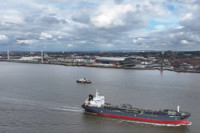
08.10.2024 © Mister Drone UK 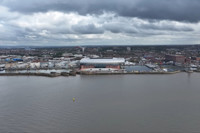
08.10.2024 © Mister Drone UK 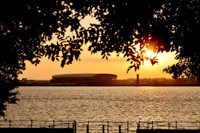
21.06.2025 © Hill Dickinson Stadium 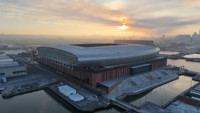
11.01.2025 © Mister Drone UK 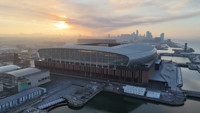
11.01.2025 © Mister Drone UK 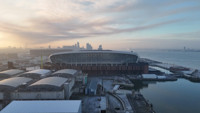
11.01.2025 © Mister Drone UK 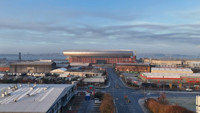
11.01.2025 © Mister Drone UK 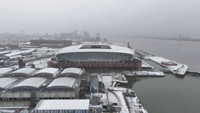
05.01.2025 © Mister Drone UK 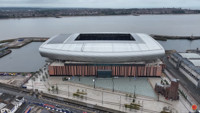
19.07.2025 © CP OVERVIEW 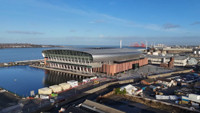
23.02.2025 © Mister Drone UK 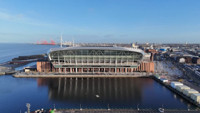
23.02.2025 © Mister Drone UK 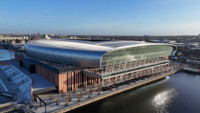
23.02.2025 © Mister Drone UK 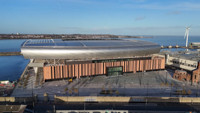
23.02.2025 © Mister Drone UK 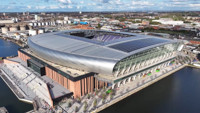
11.10.2024 © Mister Drone UK 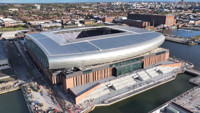
11.10.2024 © Mister Drone UK 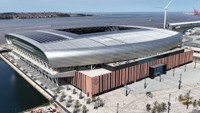
10.08.2025 © Mister Drone UK 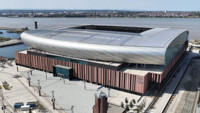
10.08.2025 © Mister Drone UK 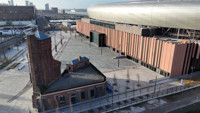
23.02.2025 © Mister Drone UK 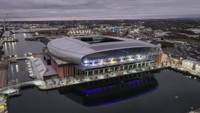
01.11.2024 © Mister Drone UK 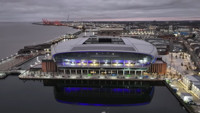
01.11.2024 © Mister Drone UK 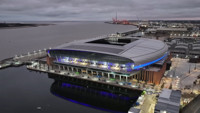
01.11.2024 © Mister Drone UK 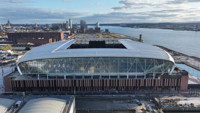
11.10.2024 © Mister Drone UK 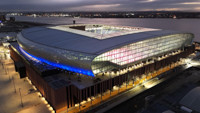
09.12.2024 © Mister Drone UK 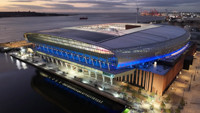
09.12.2024 © Mister Drone UK 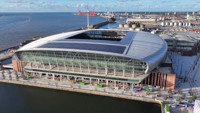
11.10.2024 © Mister Drone UK 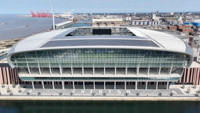
10.08.2025 © Mister Drone UK 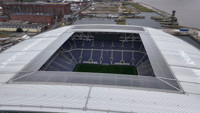
16.07.2025 © Mister Drone UK 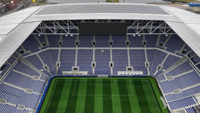
19.07.2025 © Mister Drone UK 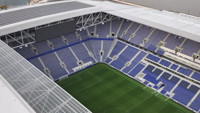
13.08.2025 © CP OVERVIEW 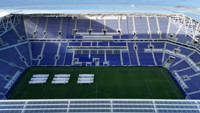
23.02.2025 © Mister Drone UK 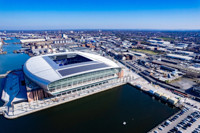
14.04.2025 © Hill Dickinson Stadium 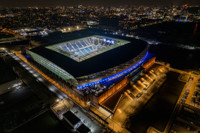
17.02.2025 © Hill Dickinson Stadium 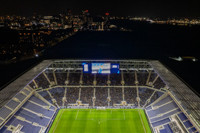
17.02.2025 © Hill Dickinson Stadium 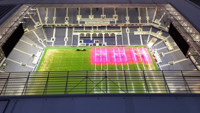
09.12.2024 © Mister Drone UK 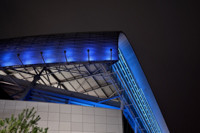
12.12.2024 © Hill Dickinson Stadium 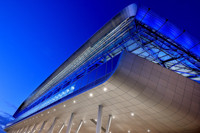
02.01.2025 © Hill Dickinson Stadium 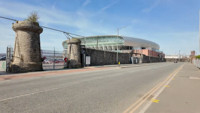
16.03.2025 © Mister Drone UK 
23.03.2025 © Pete (CC BY 2.0) 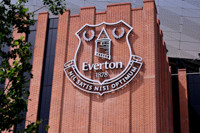
24.07.2025 © Everton FC 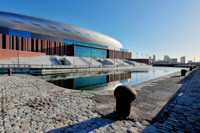
01.2025 © Hill Dickinson Stadium 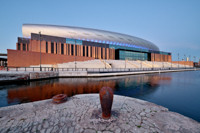
24.07.2025 © Everton FC 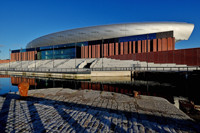
23.01.2025 © Hill Dickinson Stadium 
23.01.2025 © Hill Dickinson Stadium 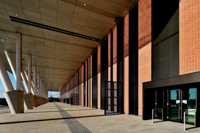
23.01.2025 © Hill Dickinson Stadium 
21.03.2025 © Hill Dickinson Stadium 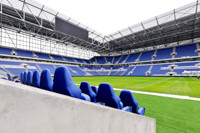
23.01.2025 © Hill Dickinson Stadium 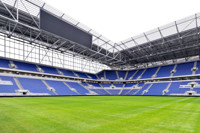
23.01.2025 © Hill Dickinson Stadium 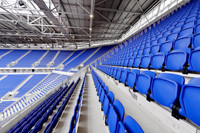
23.01.2025 © Hill Dickinson Stadium 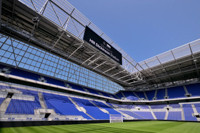
12.06.2025 © Hill Dickinson Stadium 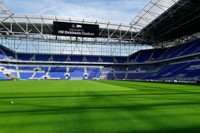
19.06.2025 © Hill Dickinson Stadium 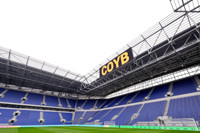
23.03.2025 © Hill Dickinson Stadium 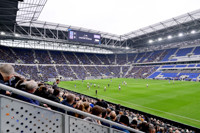
23.03.2025 © Hill Dickinson Stadium 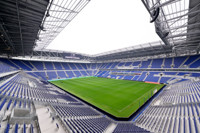
23.03.2025 © Hill Dickinson Stadium 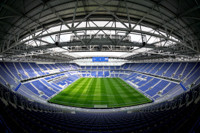
09.08.2025 © Hill Dickinson Stadium 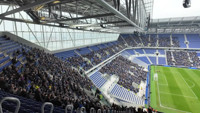
23.03.2025 © Mister Drone UK 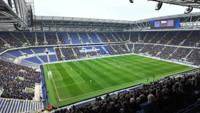
23.03.2025 © Mister Drone UK 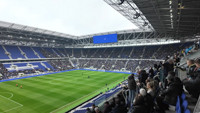
23.03.2025 © Mister Drone UK 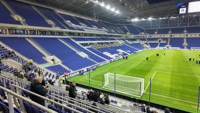
17.02.2025 © Mister Drone UK 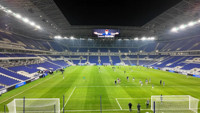
17.02.2025 © Mister Drone UK 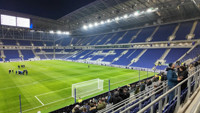
17.02.2025 © Mister Drone UK
Related news
2025
-
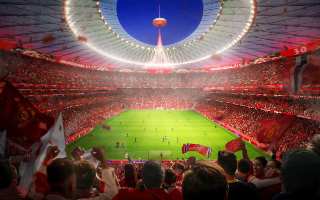
Great Britain: 2035 Women’s World Cup stadiums. New Trafford confirmed
Great Britain could host the 2035 FIFA Women’s World Cup, and today the list of stadiums that could welcome the world’s best players was revealed. England, Scotland, Wales and Northern Ireland have submitted a joint bid – the only one FIFA has received – which puts the project firmly in pole position.
-
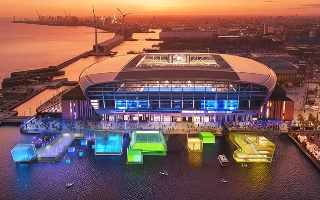
England: Wild idea in the Premier League. Floating fan zone next to Everton’s stadium?
BACA Architects has unveiled a bold new concept for a floating fan zone near Everton’s Hill Dickinson Stadium. The coastal design firm presented a vision that could completely change how fans experience matchdays.
-
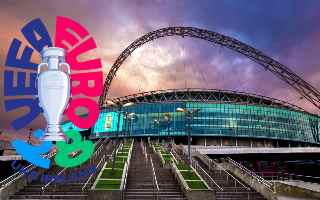
Euro 2028: Opening match in Cardiff, final at iconic Wembley – Euro 2028 venues revealed!
Although Euro 2028 is still a few years away, excitement surrounding the upcoming tournament is already building. During a ceremonial presentation at London’s Piccadilly Circus, UEFA revealed the details of the schedule and the stadiums that will host the European Championship, co-organized by England, Wales, Scotland, and the Republic of Ireland.
-
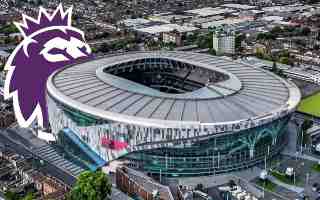
England: How the 21st century shaped the Premier League with 8 new stadiums
Although the Premier League is mainly associated with historic stadiums with over a century of tradition, the 21st century has also brought several modern venues. In this article, we will go through all the stadiums that have been built in the last 25 years.
-
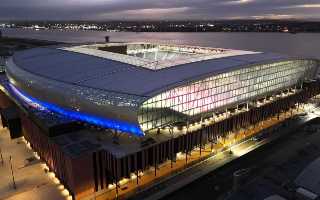
England: New Everton Stadium – from dreams to opening day
This Sunday, Everton will play its first league match at the new Hill Dickinson Stadium, marking a historic moment for the club and its supporters after more than two decades of efforts to secure a modern venue.

 StadiumDB
StadiumDB